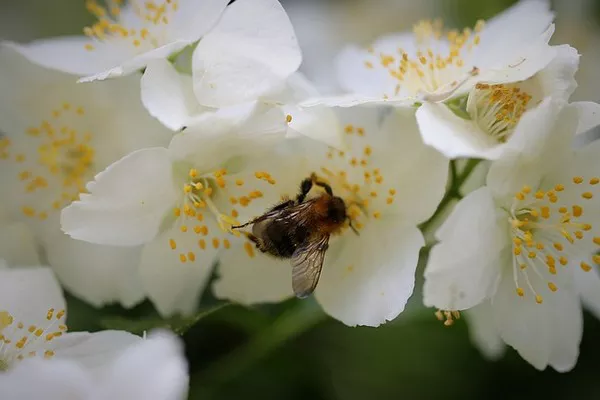The beauty of a well-tended garden can be marred by the presence of white fungus on your plants. White fungus, also known as powdery mildew, is a common plant disease that affects a wide variety of plant species. It appears as a white, powdery substance on the leaves, stems, and flowers of plants, giving them a sickly appearance. While it may not typically kill your plants, it can significantly weaken them and reduce their overall health and aesthetic appeal. In this article, we will explore the causes, prevention, and various methods to get rid of white fungus on plants, allowing you to restore your garden’s vitality and beauty.
Understanding White Fungus
Powdery mildew, scientifically known as Erysiphe spp., is a fungal disease that thrives in warm, dry conditions. It is a plant pathogen that affects a wide range of plants, from vegetables to ornamental flowers, and even some fruit trees. The most common symptoms of white fungus are the powdery, white spots or patches that appear on the plant’s surfaces. These patches are caused by the fungus spores, which attach themselves to the plant’s tissues and grow, ultimately causing damage and weakening the plant.
Causes of White Fungus
White fungus spreads through fungal spores, which can be carried by the wind, rain, or even on the clothing and tools of gardeners. Several factors contribute to the development and spread of powdery mildew:
Environmental Conditions: White fungus thrives in warm, dry, and high-humidity conditions. Poor air circulation and lack of sunlight can create ideal conditions for its growth.
Plant Susceptibility: Some plants are more susceptible to white fungus than others. Certain species are genetically predisposed to be more vulnerable, while others may be more resistant.
Overcrowding: Overcrowded plants with limited air circulation can create a microenvironment conducive to the growth of white fungus.
Poor Soil Drainage: Soil that retains excess moisture can provide a breeding ground for the fungus, making it easier for the disease to establish itself.
Prevention of White Fungus
Prevention is often the best strategy when it comes to dealing with white fungus. By creating unfavorable conditions for its growth and ensuring the overall health of your plants, you can reduce the risk of infection. Here are some preventive measures to consider:
Proper Plant Spacing: Avoid overcrowding your plants, as this can impede air circulation and create conditions favorable for white fungus. Ensure adequate spacing between plants to allow for proper ventilation.
Select Resistant Plant Varieties: When planning your garden, choose plant varieties that are known for their resistance to powdery mildew. This can significantly reduce the risk of infection.
Prune for Airflow: Regularly prune your plants to remove excess foliage and promote better air circulation. This helps reduce the humidity around your plants, making it less conducive for white fungus.
Watering Practices: Water your plants at the base, not overhead, to prevent excess moisture on the foliage. Water in the morning to allow the leaves to dry during the day. Avoid overwatering, as soggy soil can encourage fungal growth.
Proper Fertilization: Maintain proper fertilization practices to ensure your plants are healthy and less susceptible to diseases. Follow the recommended fertilization schedule for your specific plants.
Methods to Get Rid of White Fungus on Plants
If you find that white fungus has already infested your plants, there are several methods you can employ to eliminate it and prevent further spread. Here are some effective strategies to consider:
Manual Removal: For smaller infections, gently wipe or wash the affected leaves with a damp cloth or sponge. Be sure to dispose of the cloth or rinse the sponge afterward to prevent spreading spores.
Neem Oil: Neem oil is a natural fungicide that can help combat white fungus. Mix neem oil with water and a few drops of liquid soap, and spray it on the affected plants. Repeat the application every 7-14 days, as necessary.
Baking Soda Solution: Create a homemade antifungal spray by mixing 1 tablespoon of baking soda, 1 teaspoon of liquid soap, and 1 gallon of water. Spray this solution on your plants, focusing on the affected areas.
Sulfur-Based Fungicides: Sulfur-based fungicides are effective in controlling white fungus. They can be found in various forms, such as dust or liquid sprays. Follow the manufacturer’s instructions for proper application.
Fungicidal Soaps: Fungicidal soaps are available commercially and can be used to treat white fungus. Ensure that the soap is specifically designed for plants and follow the instructions on the label.
Milk Spray: A mixture of milk and water (1 part milk to 9 parts water) can be used as a natural fungicide. Spray this solution on your plants to help prevent the growth of white fungus.
Chemical Fungicides: If other methods are ineffective, you may consider using chemical fungicides. However, be cautious when using chemical treatments, as they can harm beneficial insects and may have adverse effects on the environment. Always follow the manufacturer’s guidelines and consider using them as a last resort.
Removing and Disposing of Infected Plant Parts: If the infection is severe, you may need to remove and dispose of the heavily affected plant parts, such as leaves and branches. Be sure to dispose of these in a manner that prevents further contamination.
Conclusion
White fungus, or powdery mildew, can be a frustrating issue for gardeners, but it is not insurmountable. Prevention is key to keeping your plants healthy and vibrant, as creating unfavorable conditions for the fungus is often more effective than treating an existing infection. By implementing proper spacing, good plant selection, and healthy gardening practices, you can significantly reduce the risk of white fungus. In cases where the fungus has already taken hold, various methods, including natural remedies and chemical treatments, can help eliminate the problem. It’s essential to monitor your plants regularly and take action at the first sign of white fungus to prevent it from spreading and weakening your garden. With dedication and proper care, you can enjoy a thriving garden free from the burdens of white fungus.


